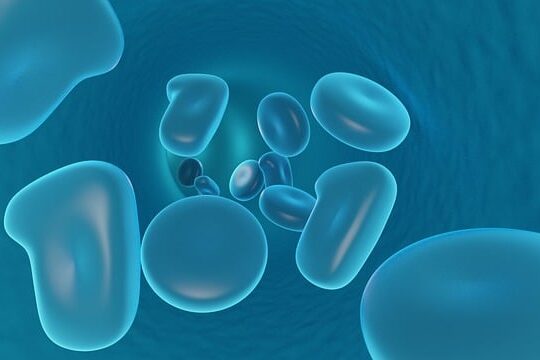A team of researchers from the Technische Universität München (TUM) together with Helmholtz Munich have identified a molecular mechanism capable of acting as a “switch” for apoptosis (programmed cell death), which could have applications in both oncology and neurodegenerative diseases.
The scientific work referenced in the article was published in Nature Communications under the title “Structural basis of apoptosis induction by the mitochondrial voltage-dependent anion channel” . ( Nature )
What exactly have they discovered?
- The VDAC1 (Voltage-Dependent Anion Channel 1) channel, located in the outer mitochondrial membrane, under certain conditions oligomerizes (i.e., clusters) or undergoes confinement in lipid nanodiscs, causing its N-terminal helix (VDAC1-N) to be exposed to interact with another protein, Bcl-xL (anti-apoptotic). ( PubMed )
- This interaction between VDAC1-N and Bcl-xL neutralizes the inhibitory function of Bcl-xL, which in turn allows the apoptosis effector protein Bak to form pores in the outer mitochondrial membrane, inducing mitochondrial membrane permeabilization and triggering apoptosis. ( Nature )
- In the words of the research team: “We used high-resolution techniques such as nuclear magnetic resonance (NMR), X-ray crystallography, and cryo-electron microscopy to see exactly how VDAC1 binds to Bcl-xL.”
Why is this finding important?
This molecular switch is key because apoptosis—the ability of a cell to self-destruct when it is damaged or no longer functional—is an essential mechanism in many diseases:
- In cancer, apoptosis frequently fails, allowing tumor cells to survive and proliferate. A functional switch could stimulate the destruction of these cells.
- In neurodegenerative diseases such as Alzheimer’s or Parkinson’s, there can be excessive or premature activation of cell death, contributing to the loss of neurons. Inhibiting this switch could protect nerve cells. ( News-Medical )
Potential applications and challenges ahead
The discovery opens up interesting avenues, but it also indicates that we are still far from clinical applications.
Possible therapeutic directions
- Activating the switch in cancer : designing drugs that stimulate the interaction of VDAC1-N with Bcl-xL so that tumor cells self-eliminate.
- Inhibition of the switch in neurodegeneration : preventing VDAC1 from interfering with Bcl-xL to avoid unnecessary neuronal death in diseases such as Alzheimer’s.
- Its potential role in cardiac injury (such as ischemia-reperfusion injury) is also mentioned, where blocking cell death could save tissue. ( News-Medical )
Challenges for clinical translation
- Although the mechanism is now well described at the molecular level, no drug that modulates this switch has yet been tested in humans . ( EurekAlert! )
- It is necessary to develop specific and safe small molecules (inhibitors or activators) that can act on the body without adverse effects.
- It is also necessary to verify that manipulating the cell death process so profoundly does not trigger other unwanted effects (such as inducing massive death of healthy cells, inflammation, etc.).
- The “switch” acts on the mitochondria, a complex and critical cellular compartment, so drug delivery (pharmacokinetics, biodistribution) will be a challenge.
What does this mean for nutrition, health, and biomedicine?
Given that your field is nutrition, genomics, and health, it’s worth reflecting on how this discovery might connect with those topics:
- In genomics and personalized health: knowledge of basic cellular mechanisms like this opens the door to precision health interventions, which could complement nutritional or lifestyle strategies.
- In nutrition and neuroprotection: if in the future neuronal survival could be modulated through these mechanisms, it would further reinforce the relevance of nutrition (and nutrigenomics) in the prevention of neurodegenerative diseases.
- In cancer and metabolism: many tumor cells depend on alterations in mitochondria and apoptosis to survive. Identifying this switch adds a new biological target that could eventually be combined with nutritional or metabolic approaches to improve cellular resilience.
Links to key studies and readings
For those who want to delve deeper, here are direct links to the relevant scientific papers and abstracts:
- Daniilidis M. et al. Structural basis of apoptosis induction by the mitochondrial voltage-dependent anion channel. Nature Communications. 2025;16:9481. DOI:10.1038/s41467-025-65363-1. ( Nature )
- “Researchers identify new molecular switch involved in programmed cell death” – News-Medical. Nov 03, 2025. ( News-Medical )
- “New switch for programmed cell death identified” – EurekAlert. Oct 27, 2025. ( EurekAlert! )
- Wikipedia article on VDAC1: provides general context about the protein. ( Wikipedia )
Conclusion
The discovery of a cellular “off switch” in the apoptosis mechanism represents a significant advance in basic biology with translational implications for serious diseases such as cancer and Alzheimer’s. Although still a preliminary step, the discovery of the VDAC1/Bcl-xL switch opens new avenues for designing precision therapies that can complement or transform current approaches in oncology, neuroscience, and metabolic medicine. For the fields of nutrition and genomics, this type of research reinforces the idea that the cell’s molecular processes are modulable and that classical mechanisms (such as cell death) can be integrated into strategies for prevention, intervention, and personalized health.
Date: 3/11/25
Photo: Pixabay
Note: The Nutrigenomics Institute is not responsible for the opinions expressed in this article.






